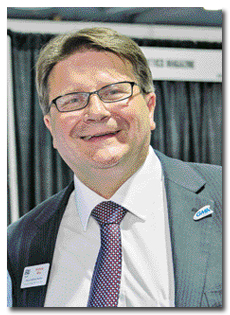For months, Bangladesh has been the focus of some very bad press due to the recent accidents in
garment factories. The Rupp Report has informed its readers in several articles about the situation
in Bangladesh. However, there is another place, and this time in Europe, that has some comparable
points. The issue is the situation in the traditional textile city of Prato, Italy.
Due to a fire in a Chinese textile factory in Prato, seven people were killed a few days
ago. The victims of the accident, seven dead and four wounded, were all Chinese. The fire disaster
draws attention to the miserable living and working conditions for what is essentially slave labor
in this town.
Many Chinese Immigrants
Among all Italian cities, Prato has by far the highest proportion of Chinese immigrants.
With a total population of about 188,000 people in the city, local authorities estimate the number
of Chinese immigrants to be 30,000. According to official data, 277,000 Chinese live in the whole
of Italy.
At first, the reason for the fire was not clear; the flames caused the collapse of part of
the factory. In this part of the building is located a sleeping area with small bedrooms for the
Chinese workers. The accident shows very drastic particular attention to the grievances. The
problem for the workers is the fact that they work illegally in the industrial building as well as
living with their families in primitive, shack-like crates. Because plastics were lying around, the
fire spread rapidly, and the barred windows on the building hindered an escape.
Taking Over Control
In the past 20 years, Chinese entrepreneurs have taken control of the apparel industry in
Italy’s textile stronghold. According to local information, countless Chinese people work without a
residence permit and at extremely low wages in the textile factories. Due to this strong
competitive pressure, many Italian textile manufacturers have been forced to close down their
activities.
According to the Chamber of Commerce of Prato, there are some 4,000 Chinese companies
throughout the province, specializing mainly in the field of “Pronto moda,” which means fast
delivery, always new models at low prices – and some 10 to 15 illegal workers in each factory.
Authorities complain that the Chinese are hardly paying any taxes and the major part of
their income is sent back home to China. On the other hand, social services, schools and hospitals
are hopelessly overburdened by the same people. The anger about the Chinese “invasion” is largely
spread around Prato. The rage of thousands of Italian workers who have lost their jobs in the
textile sector during the last few years is big and permanently increasing. Since the year 2000,
the number of people officially employed in this sector in Prato has been halved to just 20,000.
These Chinese enterprises in Prato export all over the world and supply big retailers such
as Zara, and many more smaller and local textile businesses. The hourly wage is estimated to be 1
euro, and the work shift is up to 18 hours a day. Local authorities have failed so far to control
the situation. The city councilor of Prato, Aldo Milano, responsible for the safety, lamented that
the city had been abandoned by the government despite repeated warnings.
The Italian Way
A number of representatives of the authorities in Rome expressed their horror after the
fire, and Minister for Immigration Cécile Kyenge condemned the situation at the factory as a
serious violation of human dignity. However, as in previous situations, such pronouncements were
never followed by action. In January 2010, Italy’s minister of the interior announced a tougher
fight against illegal Chinese workers in Prato. The police in this regard conducted a big raid,
which was denounced by Chinese officials for its “SS methods.” Apparently, nothing has changed in
the meantime. Nevertheless, Mayor Roberto Cenni proclaimed an official day of mourning and called
for a tougher fight against the permanent illegality in Prato.
False Labeling
The label “Made in Italy” gives a good conscience. One might think that the label stands for
good Italian fashion and products that are produced reasonably fairly and still very cheap. But the
customers are somewhat fooled and betrayed. The fact that the sweater is so inexpensive is
definitively not only because of the low-cost fiber material. The low price is up to the Chinese
companies in Prato, whose employees are working under severe and miserable conditions, as the
accident shows.
Italy has long been regarded to be a non-problematic country of production. Even the global
Business Social Compliance Initiative (BSCI) didn’t assess the EU country to be a risk nation. For
the BSCI, even after the devastating fire in Prato, Italy is not among the high-risk countries,
like some 14 other EU member states, such as Romania or Bulgaria. Strange enough, the poor working
conditions in Italy, especially in Prato, are not news to BSCI.
With the very speedy fashion industry, Asian working conditions have now arrived in Europe.
Authorities claim that a completely deregulated paradise for Wild West capitalism was generated in
Italy, which brought the so-called sweat shops into the heart of Europe.
Different Views In Prato
In the center of Prato, the second largest city in Tuscany, the recession that has afflicted
Italy for several years is surprisingly less severe than in the rest of Italy. In spite of all
these troubles, the president of the Industrial Association of Prato, Andrea Cavicchi, pointed out
that in contrast to the situation in the rest of Italy, the local economic performance has dropped
very little during the last few years. Accordingly, the unemployment rate is around 7 percent,
which is significantly lower than the national average of 11 percent.
But how is that possible in a city that in the last 20 years has lost 4,000 enterprises,
which represent half of its textile companies that employed 20,000 people? The answer is, here is
the largest Chinatown in Italy, or in Macrolotto – the large-scale industrial district of Prato,
where the majority of the approximately 3,600 Chinese apparel manufacturers are located. According
to official estimates, these companies have an annual turnover of 1.5 billion euros, of which just
more than 50 percent comes from exports.
Miserable Working Conditions
In the buildings of the Macrolotto, the apparel not only is stored but also is produced,
mostly under miserable working conditions. Experts say that the Chinese workers would be smuggled
into the country, just like the fabrics, with some help from interested parties. They work like
slaves for a pittance of one euro per hour for their Chinese patrons.
And now, for the mayor of Prato, the tragedy was predictable. He complained bitterly about
the Chinese, who don’t follow any rules, don’t pay taxes, and don’t spend any money in Prato but
send all the cash home. On the other side, they send their children to local schools and the
hospitals are overcrowded – half of all newborn babies in Prato today are Chinese. “Prato is
helplessly overextended by the Chinese invasion,” the mayor claimed. But why has no action yet been
taken?
The Chinese Way
Local government problems are said to include the lack not only of enough police officers,
but also of legal tools. The control of the Chinese is not only due to some language barriers; it
is about the Chinese starting new businesses every year or two and taking old companies out of
service, basically to escape paying taxes. According to the Chamber of Commerce of Prato, the
annual registration of new Chinese companies is close to 50 percent of all registered companies.
Hope Of Deliverance
On the other side, the repeatedly used image by Italian media of the Chinese destroying the
traditional indigenous textile industry is said to be wrong. This is also the belief of the
president of the industrialists, Cavicchi, and the local secretary of the trade union.
According to Cavicchi, a textile entrepreneur, the situation has now stabilized. Many of the
remaining 2,800 Italian textile companies with some 20,000 employees achieved an annual turnover
last year of more than 3 billion euros, which has considerably improved their capital situation and
competitiveness. Cavicchi said that those companies are dedicated to quality and innovative
fabrics, which are in high demand in Asia. He hopes that the local and the Chinese companies in
Prato will cooperate in the future and combine their respective strengths. Previous attempts at
cooperation have mostly failed. However, Cavicchi is confident “because already two Chinese
companies became members of the Industrialists association.” The last word in this Sino-Italian
melodrama is not yet spoken.
December 10, 2013









